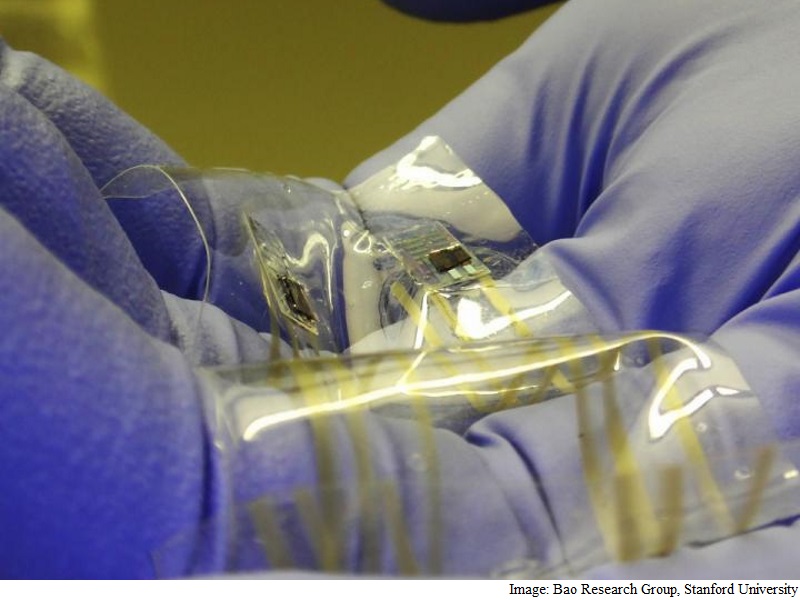- Home
- Science
- Science News
- Artificial Skin to Give People With Prosthetics a Sense of Touch: Study
Artificial Skin to Give People With Prosthetics a Sense of Touch: Study

Researchers were able to send the touching sensation as an electric pulse to the relevant "touch" brain cells in mice. The stretchy, flexible skin is made of a synthetic rubber that has been designed to have micron-scale pyramid like structures that make it especially sensitive to pressure.
Scientists sprinkled the pressure-sensitive rubber with carbon nanotubes - microscopic cylinders of carbon that are highly conductive to electricity - so that, when the material was touched, a series of pulses is generated from the sensor.
The series of pulses is then sent to brain cells in a way that resembles how touch receptors in human skin send sensations to the brain, 'Live Science' reported.
"We were able to create [a system] very similar to biological mechanical receptors," said Benjamin Tee from the Agency for Science, Technology and Research in Singapore.
In order too test whether the skin could create electric pulses that brain cells could respond to, the scientists connected the synthetic skin to a circuit connected to a blue LED light.
When the skin was touched, the sensor sent electric pulses to the LED which pulsed in response. The sensors translated that pressure pulse into an electric pulses. As the sensors in the skin sent the electrical pulse to the LED - akin to touch receptors in real-life skin sending touch-sensation signals to the brain - a blue light flashed. The higher the pressure, the faster the LED flashed.
The research was published in the journal Science.
Get your daily dose of tech news, reviews, and insights, in under 80 characters on Gadgets 360 Turbo. Connect with fellow tech lovers on our Forum. Follow us on X, Facebook, WhatsApp, Threads and Google News for instant updates. Catch all the action on our YouTube channel.
Related Stories
- Samsung Galaxy Unpacked 2025
- ChatGPT
- Redmi Note 14 Pro+
- iPhone 16
- Apple Vision Pro
- Oneplus 12
- OnePlus Nord CE 3 Lite 5G
- iPhone 13
- Xiaomi 14 Pro
- Oppo Find N3
- Tecno Spark Go (2023)
- Realme V30
- Best Phones Under 25000
- Samsung Galaxy S24 Series
- Cryptocurrency
- iQoo 12
- Samsung Galaxy S24 Ultra
- Giottus
- Samsung Galaxy Z Flip 5
- Apple 'Scary Fast'
- Housefull 5
- GoPro Hero 12 Black Review
- Invincible Season 2
- JioGlass
- HD Ready TV
- Laptop Under 50000
- Smartwatch Under 10000
- Latest Mobile Phones
- Compare Phones
- Realme P4x 5G
- OnePlus Ace 6T
- OPPO A6x 5G
- Samsung Galaxy Z TriFold
- Poco F8 Ultra
- Poco F8 Pro
- Huawei Mate 80 RS Master Edition
- Huawei Mate 80 Pro Max
- Asus ProArt P16
- MacBook Pro 14-inch (M5, 2025)
- Poco Pad M1
- Poco Pad X1
- Just Corseca Skywatch Pro
- Honor Watch X5
- Acerpure Nitro Z Series 100-inch QLED TV
- Samsung 43 Inch LED Ultra HD (4K) Smart TV (UA43UE81AFULXL)
- Asus ROG Ally
- Nintendo Switch Lite
- Haier 1.6 Ton 5 Star Inverter Split AC (HSU19G-MZAID5BN-INV)
- Haier 1.6 Ton 5 Star Inverter Split AC (HSU19G-MZAIM5BN-INV)

















